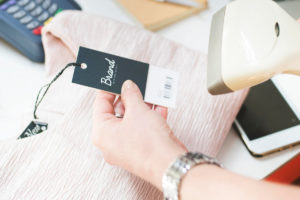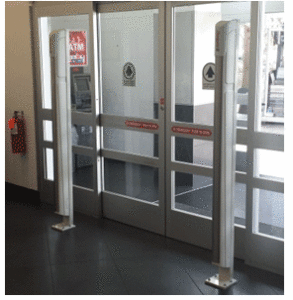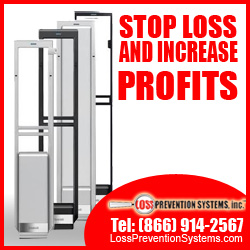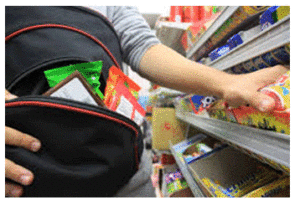
When new legislation passes in many states, the array of issues that come to new elected officials varies considerably.
Shoplifting laws are one of the many topics legislators review to make sure the punishment is appropriate. Businesses and small businesses in general need to be protected by the laws of the country to ensure the economic growth of a locality, the state and ultimately the country.
The punishment for shoplifting varies according to the state and in some instances the county where the business is located. Laws are put in place to make sure these silent crimes are not committed with impunity, and the shoplifter is prosecuted according to the law.
Unfortunately, many of these shoplifting incidents are not prosecuted for many different reasons. Ultimately, it is up to the business to decide whether to prosecute the shoplifter or not. As a business owner, they have to consider the costs associated with prosecuting shoplifters as a rule and whether it is economically sound to do so.
A lawyer’s fee for an hour or to prosecute a case depends on the region, the experience and the complexity of a case but, either way, their fee does not come cheap.
As a business owner, is it practical or economically possible for you to have a privately retained attorney? Is it your business practice to prosecute a shoplifter regardless of the quantity they steal? There are many questions one needs to answer, and many options you have to make as a business owner regarding shoplifting.
Shoplifting in the United States have become a multi billion nightmare for businesses in the retail industry. From the casual shoplifter to organized retail rings, the losses the retail industry suffers are staggering. The small stores or shops in this industry have to fight and stop loses because their livelihood depends on their ability to stop the shoplifters. The profit margin from sales is too small for them to ignore the problem or to neglected it for too long.
For many of the small retail businesses, a loss prevention system that allows them to protect their merchandise and profits is one of the best ways to invest in their business. Big retail chains have for many years now invested in loss prevention systems to help them minimize the losses and help them prevent shoplifting and employee theft.
A loss prevention system that gives the employer or management of the store up to the minute information about the merchandise , allows them to do their job more efficiently and helps them prevent theft is an investment that will pay off sooner than you think.

 For a loss prevention officer, the holiday season is a hard time to be jolly when the busiest shopping season of the year brings with it its shoplifters, crime, and theft.
For a loss prevention officer, the holiday season is a hard time to be jolly when the busiest shopping season of the year brings with it its shoplifters, crime, and theft. For the retail industry and small businesses in general, the holiday season has started, and for them, this season can be a financial boost for their business.
For the retail industry and small businesses in general, the holiday season has started, and for them, this season can be a financial boost for their business. Black Friday and the holiday shopping weekend has generally been the time of the year that most retailers are excited about. This is the time when shoppers are going to pull out their wallets and spend money. Deep discounts, doorbusters, even gift bags for the first customers, have been used to entice shoppers to visit stores early. It has been so successful as a marketing tool that stores have even advertised early Black Friday sales in JULY! Unfortunately, it seems that there has been a dark cloud overshadowing this weekend and it is more ominous each year. This cloud is one that can turn a Black Friday into a Bleak Friday if a store owner isn’t prepared for it.
Black Friday and the holiday shopping weekend has generally been the time of the year that most retailers are excited about. This is the time when shoppers are going to pull out their wallets and spend money. Deep discounts, doorbusters, even gift bags for the first customers, have been used to entice shoppers to visit stores early. It has been so successful as a marketing tool that stores have even advertised early Black Friday sales in JULY! Unfortunately, it seems that there has been a dark cloud overshadowing this weekend and it is more ominous each year. This cloud is one that can turn a Black Friday into a Bleak Friday if a store owner isn’t prepared for it. One of the most prevalent crimes in the United States is shoplifting.
One of the most prevalent crimes in the United States is shoplifting. NO! not yet. Before we begin patting ourselves on the back you must remember that your Sensormatic System is only part of your shoplifting solution. Your Sensormatic System will protect your merchandise however, many shoplifters are determined and will try to steal anyway. The Sensormatic System itself is a deterrent. Its mere presence will dissuade many shoplifters.
NO! not yet. Before we begin patting ourselves on the back you must remember that your Sensormatic System is only part of your shoplifting solution. Your Sensormatic System will protect your merchandise however, many shoplifters are determined and will try to steal anyway. The Sensormatic System itself is a deterrent. Its mere presence will dissuade many shoplifters.
 I was once asked why I kept toys on my desk in my Loss Prevention office. I had two reasons, the first was they were collectible superhero figurines (The Tick to be precise) and the other was to keep children entertained. It is a sad fact in Retail Loss Prevention but there are children who shoplift, there are parents who shoplift and there are parents who use their children to help shoplift. As a Loss Prevention professional, it is not hard to handle an adult who steals. There may be anger, tears, and pleading but these are adults and they made a choice to steal so there should be consequences. What is not so easy to cope with is the child who has to sit in the office while the parent is being processed and does not understand what is taking place. There were many instances when I had to try to keep these young ones entertained as mom or dad were answering questions about the crime, providing personal information or trying to contact a family member or friend who would be willing to pick up the child. Add to the mix a parent who is throwing a conniption fit or making the scenario worse by bawling and wailing in front of the child begging you to let them go “Just this one time and it won’t ever happen again, I promise.” It becomes quite annoying. It also upsets the child who becomes a prop for the parent. The toys were my prop to entertain the children in a pinch.
I was once asked why I kept toys on my desk in my Loss Prevention office. I had two reasons, the first was they were collectible superhero figurines (The Tick to be precise) and the other was to keep children entertained. It is a sad fact in Retail Loss Prevention but there are children who shoplift, there are parents who shoplift and there are parents who use their children to help shoplift. As a Loss Prevention professional, it is not hard to handle an adult who steals. There may be anger, tears, and pleading but these are adults and they made a choice to steal so there should be consequences. What is not so easy to cope with is the child who has to sit in the office while the parent is being processed and does not understand what is taking place. There were many instances when I had to try to keep these young ones entertained as mom or dad were answering questions about the crime, providing personal information or trying to contact a family member or friend who would be willing to pick up the child. Add to the mix a parent who is throwing a conniption fit or making the scenario worse by bawling and wailing in front of the child begging you to let them go “Just this one time and it won’t ever happen again, I promise.” It becomes quite annoying. It also upsets the child who becomes a prop for the parent. The toys were my prop to entertain the children in a pinch. For a small business owner, bringing sales to their business is not an easy feat.
For a small business owner, bringing sales to their business is not an easy feat.